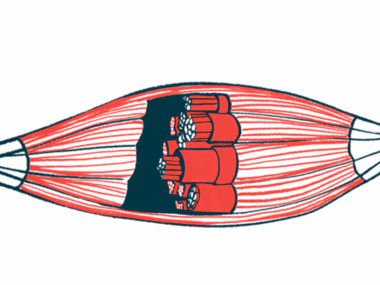Genetic Links Found for Essential Tremor; Patients Needed for Clinical Trial
Written by |

A large genome-wide study discovered a strong association between essential tremor, commonly misdiagnosed as Parkinson’s disease, and a specific gene, and less strong associations with two other genes. This is an important finding for a movement disorder that causes postural and kinetic tremor of the upper extremities, and that can have debilitating consequences.
The study, “Genome-wide association study in essential tremor identifies three new loci,” was published in the journal Brain.
Essential tremor is a “bilateral, largely symmetric postural or kinetic tremor,” a common movement disorder. Essential tremor has a reported prevalence of 0.9 percent, increasing to 4.6 percent in people over the age of 65. The disease is progressive and significant disabilities occur. Hands and arms are predominantly affected, but head, voice and leg tremor also occur.
Essential tremor has less severe health impacts than Parkinson’s, but does get worse over time. The disease has a large genetic component and it is common to see large families with several members affected. However, the underlying genetic mechanism of essential tremor needs more exploration.
Now, a team of researchers at the Montreal Neurological Institute and Hospital of McGill University in Canada and Kiel University in Germany have led a large international collaborative genome-wide association study that included 2,807 essential tremor patients and 6,441 controls of European descent.
The researchers found a strong relationship between essential tremor and the gene STK32B (serine/threonine kinase 32B). A relationship between essential tremor was also observed in two other genes, but to a lesser extent.
The team will now conduct studies in a larger patient group, aiming to better understand the role played by these genes in essential tremor, as well as to discover other genes that are predisposed to the disease. More understanding of the genetic basis of disease may lead to better diagnostic tools and treatments.
“We have the first clue now, but we want to expand on that because we still have much to learn,” Simon Girard, a professor at the Université du Quebec à Chicoutimi and the paper’s lead author, said in a news release.
To follow up this study, the researchers need to examine more than 10,000 individuals with essential tremor. Finding this many participants will be challenge, Girard said, in part because many people with the condition do not seek medical care.
“Essential tremor is the most common movement disorder, but many sufferers don’t seek medical help,” he said. “People suffer from the tremor, but they tend to make do as best they can. Some people have had a tremor for 10-20 years or more. They know they have a tremor and they live with it.”
People interested in taking part in the study should contact Vessela Zaharieva, the research coordinator, by email at [email protected].
If they meet the study inclusion criteria, they will be contacted by telephone to answer more questions and may be invited to take part in this important study.
“People suffering from essential tremor have a chance to help us better understand this complex disease,” said Guy Rouleau, director of the MNI and the study’s senior author. “The findings will improve the chances of developing drugs to lessen or halt the symptoms, a benefit not only to today’s sufferers but those of the future.”





